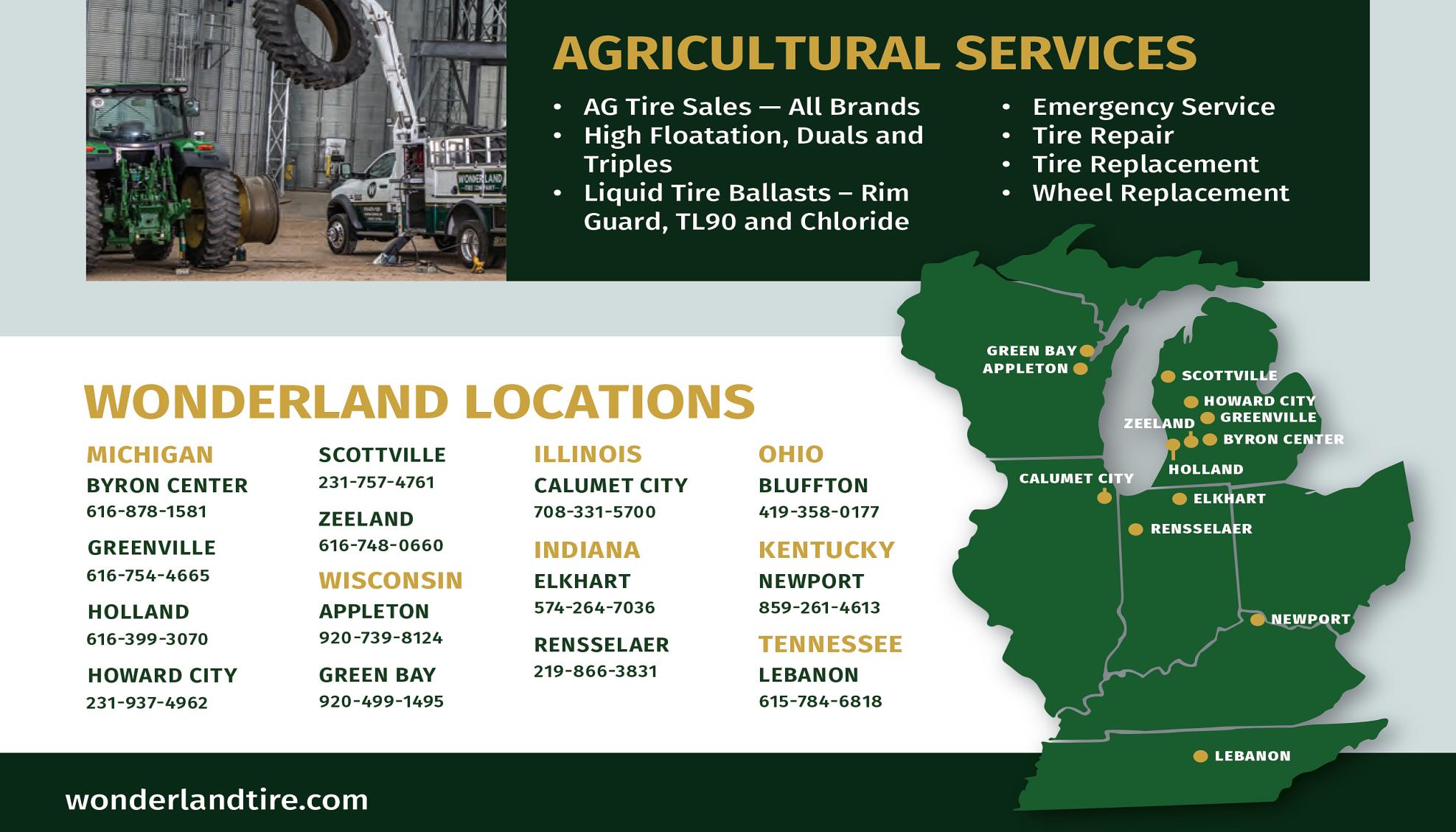&FAMILY FARM MAGAZINE
April 5, 2025




April 5, 2025



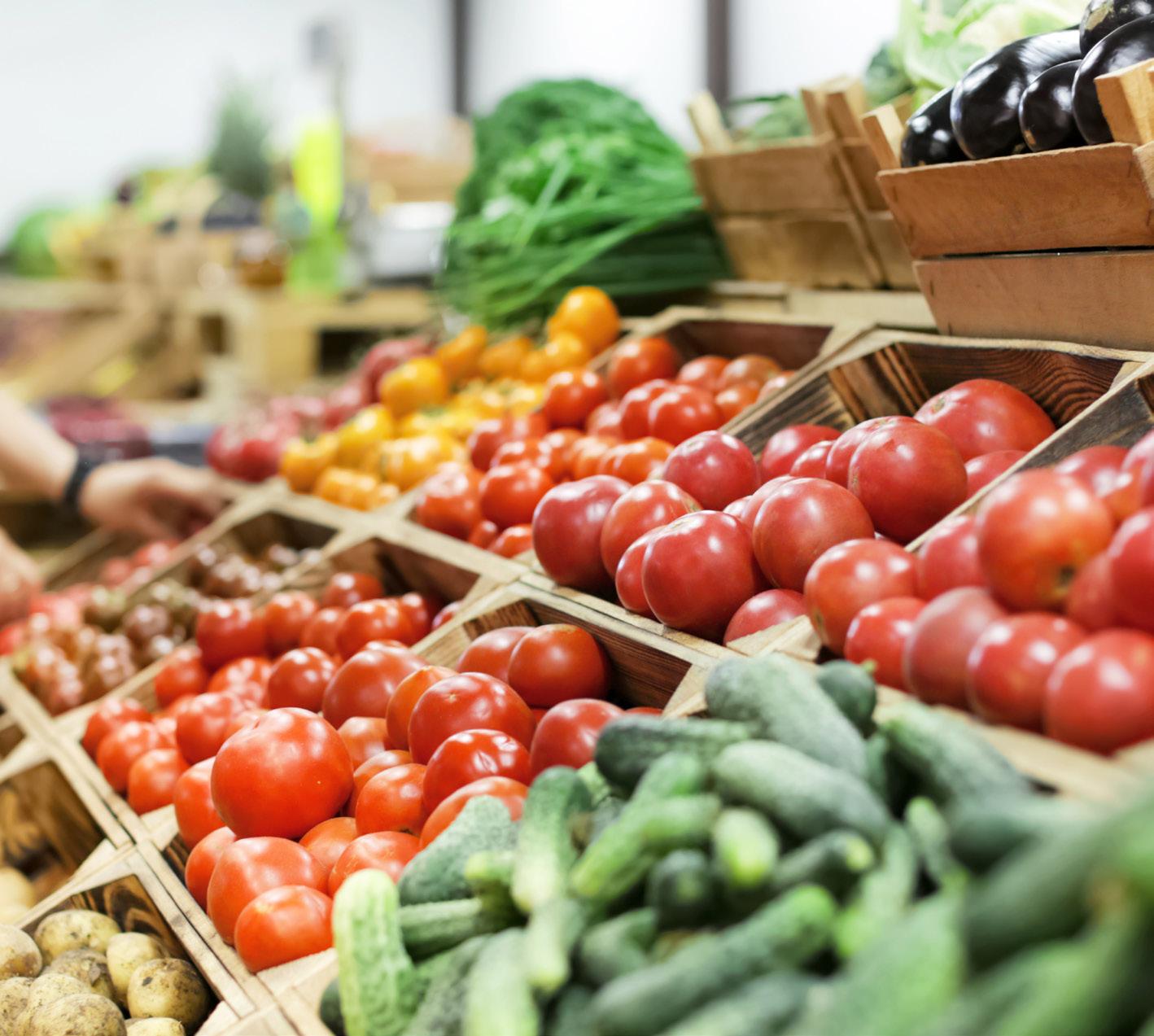
reedcityfarmersmarket@gmail.com
https://www.reedcitychamber.com/farmersmarket


https://www.reedcitychamber.com/farmersmarket





Farmers’ markets, once humble gatherings, have evolved into bustling hubs of local commerce.
For farmers and vendors participating in these markets, the challenge lies in producing quality goods and in effectively marketing them to stand out in a competitive environment. Effective marketing helps farmers thrive in the competitive marketplace and create a lasting connection with their customers. As these markets continue to flourish, the cultivation of strong marketing strategies ensures that farmers’ produce remains at the forefront of consumers’ minds.
Developing a compelling brand story creates a connection between farmers and consumers. Share the journey of your farm, highlight sustainable practices and emphasize the uniqueness of your products. Customers are increasingly drawn to the stories behind the produce they purchase.
Presentation matters. Create visually appealing displays that showcase the freshness and variety of your products. Use colorful, well-designed signage, arrange produce in an aesthetically pleasing manner and consider offering samples to entice potential customers. Extend your reach beyond physical markets by establishing an online presence. A user-friendly website or e-commerce platform allows customers to browse your products, place orders and even arrange for delivery or pickup, expanding accessibility. Leverage the power of social media to connect with customers beyond the market. Regularly update platforms like Instagram and Facebook with visually appealing posts. Share behind-the-scenes glimpses of farm life, promote special

offers and encourage customer interaction.
Rewarding loyal customers fosters repeat business. Consider implementing loyalty programs, offering discounts for returning customers or providing special perks for those who refer new clients. Building a loyal customer base is a powerful long-term marketing strategy. Tailor your marketing strategies to reflect the
changing seasons. Highlight seasonal produce, create themed promotions or offer limited-time discounts on specific items. Embracing the rhythm of the seasons keeps your offerings fresh and exciting.
Actively seek customer feedback to understand preferences and areas for improvement. Use this information to adapt and refine your offerings. An agile approach to your product lineup based on customer
input enhances satisfaction and loyalty.
Informing customers about your farming practices, the benefits of locally sourced products and the unique qualities of your offerings can set you apart. Consider hosting workshops, demonstrations or tastings to engage and educate your audience.
Collaborative efforts can amplify visibility. Partner with other vendors to create joint
promotions or themed events. Cross-promotion helps tap into each other’s customer bases and adds a sense of community to the market experience.
Become an active participant in the local community. Sponsor local events, engage in charitable initiatives or collaborate with local businesses. Establishing your presence outside the farmers’ market strengthens your brand and fosters community support.
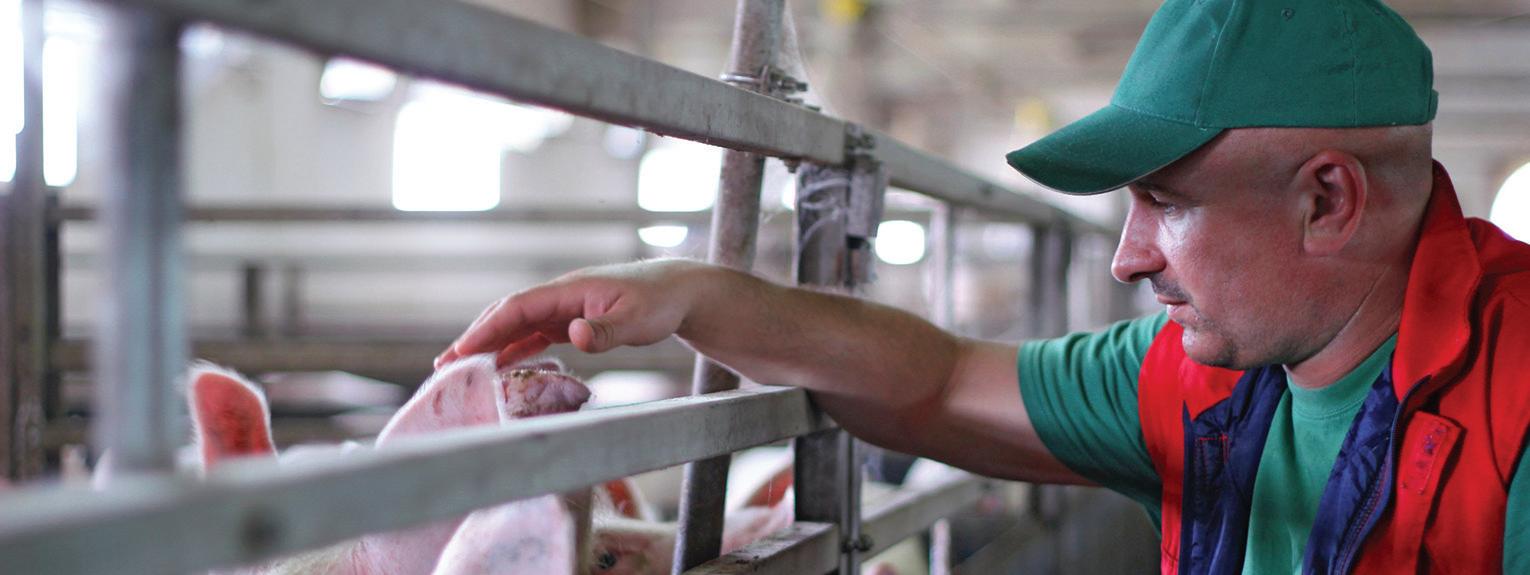
The demand for food is directly related to population growth. By 2050, food needs are expected to double, according to a study published in the journal Agricultural Economics. That puts increasing pressure on the agricultural sector to meet growing demand. However, many experts think the industry will fall short. In addition to increased food demand, consumer habits, technology, and policies continue to force the agricultural industry to evolve. Indeed, the agricultural sector may look very different in the future.
Social media has transformed many industries, and it can do the same for agriculture. Farming supply chains can communicate with one another by getting feedback from customers in real time through social media. However, agricultural operations will have to devote teams to manage social media presence, especially since misinformation is so widespread on social media.
Apart from social media, local farmers may increase their efforts to utilize mobile apps and direct-to-consumer purchasing options. The global pandemic helped businesses reimagine takeout and curbside shopping. Local farms may want to market to the home-shopping community, providing ways to deliver produce, fresh meat and poultry and other items direct to customers’ homes.
The future may feature a significant shift in the way farms source their ingredients. Regeneration International says that regenerative agriculture
Social media has transformed many industries, and it can do the same for agriculture. Farming supply chains can communicate with one another by getting feedback from customers in real time through social media.

can be the future. This describes farming and grazing practices that may help reverse climate change by rebuilding soil organic matter and restoring degraded soil biodiversity. Some insist that farmers who utilize regenerative agriculture produce food that is more sustainable and healthy. This is something eco- and healthconscious consumers can stand behind.
There’s a good chance that technology will continue to play important and growing roles in farming operations. New agricultural technologies can collect data on soil and plant health and produce results in real time. Precision farming technology can be developed to deliver integrated solutions no matter the size of the operation.
Farmers may give more thought to sustainable products. Crops like hemp and cannabis are being utilized in new and innovative ways, and they’re only the start as consumers have expanded their views on plant-based foods and products.
While there’s no way to see into the future, individuals can anticipate changes that could be in store for the agricultural sector in the decades ahead.
Shifting consumer demands pose a challenge for any industry, including the agricultural sector. Farmers who want to ensure they’re in the best position to meet consumer demands in the coming decades may be happy to learn that an aging population figures to work in the agricultural sector’s favor. The Economic Research Service with the U.S. Department of Agriculture notes that individuals over age 65 are expected to make up a greater percentage of the overall population in the years to come. That should, the ERS notes, benefit farmers, as older individuals tend to be more health-conscious with their eating habits than younger generations. The same trend will likely play out in Canada, where Statistics Canada estimates the percentage of individuals age 65 and older will increase to 22.5 by 2030, marking a nearly 10 percent increase since 2010, when just 14.1 percent of Canadians were 65 or older.
Labor shortages can make it hard for any business owner to compete, and those working in the agricultural sector are no exception to that reality. The U.S. Senate Committee on Aging notes that the median age of farmers in the United States is 58, and more farmers are older than 65 than under 44. That doesn’t bode well for the future, but the labor shortages confronting the agricultural sector pose an immediate problem as well.
A January 2025 report from the agricultural tech firm Sabanto noted there are currently 2.4 million unfilled jobs within the agricultural sector. Labor shortages pose a unique challenge, but the following are some strategies agricultural operations can consider to overcome a lack of help.
• Look for ways to automate. Automation can be a lifeline that helps to meet the challenge of labor shortages within the agricultural sector. Modern technology enables completion of various tasks, such as water measurement and soil analysis, through the use of automated sensors or programs. Automation can allow farmers to direct their limited personnel resources toward tasks that require hands-on work.
• Join forces with fellow farmers. Another potential solution is to pool limited labor resources with other
farmers in your area. Farmers can work together to identify workers who can be trained as specialists and then transported to various sites to perform vital tasks each farm needs to survive.
• Cut down on field operations when possible. Reducing reliance on tasks that cannot be automated is another strategy to confront the labor shortage. For example, no-tillage farming methods require fewer personnel. Seasonal farming that limits operations during times of year when the available workforce is particularly scant also can help navigate the labor shortage.
• Encourage local politicians to promote legislative solutions. Policy reform that prioritizes access to labor within the agricultural sector can serve both short- and long-term needs. Farmers can contact local politicians and let them know about the challenges facing the agricultural sector, offering invaluable feedback that can be used to write and promote farmer-friendly legislation. The agricultural sector faces immediate and long-term labor shortages. Confronting that sizable challenge may require a willingness to embrace new strategies and promote important policy changes in the years ahead.







Consumers familiar with the disparity in price between organic fruits and vegetables and conventional alternatives may be curious if that difference in price pays off with healthier foods. According to a 2014 study published in the British Journal of Nutrition, it does. Researchers behind the study concluded that the antioxidant compounds in organic fruits and vegetables deliver between 20 and 40 percent higher antioxidant activity. That’s a significant benefit, as the Harvard T.H.
Chan School of Public Health notes that antioxidant-rich fruits, vegetables and legumes are associated with a lower risk of various diseases, including cardiovascular diseases and cancer, and deaths from all causes. In addition, the Mayo Clinic notes that organically grown produce has traditionally had lower levels of pesticide residue than conventionally grown alternatives, though safety measures governing conventional produce and residue levels have changed in recent years and reduced that gap.


Farming has never been a vocation for individuals looking for easy work. Farmers typically work long hours, braving the elements regardless of how unpleasant the weather may be.
All that hard work ensures individuals who live in rural, urban and suburban communities have constant, readily available access to healthy foods. Such devotion merits support, and thankfully there are many things consumers can do to show their appreciation for local farmers.
• Buy fresh foods at your local farmers market. Farmers markets are many foodies’ favorite places, but they aren’t exclusive to individuals with a passion for food. Everyone needs to eat, so why not eat foods grown locally, which are generally more fresh and appetizing than imported fruits and vegetables sold at chain grocery stores? Even individuals who don’t typically eat fresh fruit and vegetables can find something delectable at a local farmers market, where anything from homemade tomato sauces to locally raised fresh beef and pork might be on sale.
• Order directly from local farms. Some farmers have embraced the e-commerce revolution and begun selling the foods they grow to consumers via their own websites. Research local farms and determine if it’s possible to buy
directly from them. Farms may offer delivery or pick-up, and consumers can enjoy fresh foods even more knowing that they helped farmers earn higher profits by buying directly from them.
• Check labels before buying in local grocery stores. Packaging labels will indicate where fruits and vegetables came from. When possible, choose items produced by local farmers. This may include fruits, vegetables, meat, pork, or even desserts like pies. Locally produced foods often taste more fresh than items sent from overseas or distant farms, and consumers will feel better knowing they helped to support local farmers.
• Spread the word. Get the word out after a satisfying experience with local farms and farmers. Whether it’s buying food from farms or taking advantage of family days that let kids enjoy a day on the farm, sharing positive experiences via social media or word-of-mouth can be a great way to inspire your neighbors to support local farmers as well.
Consumers can do much to support hardworking local farmers. In addition to feeling good about supporting their rural neighbors, consumers also might feel good when they sit down and enjoy a meal featuring locally grown, fresh foods.
Waste is a byproduct of every industry, even those that produce food. Crops and animals may feed the masses, but there are items on the farm that require disposal or recycling. Farm waste management is a practice that endeavors to remove waste in ways that are affordable, sustainable and effective.
Substantial waste is produced in agricultural operations. This can include manure, animal bedding, leaves, clippings, and even scraps from the kitchen. According to the University of Massachusetts Amherst, without proper mitigation methods, farm waste can be detrimental to the environment simply due to its volume. Farm waste may be natural, chemical-, animal-,
medical-, and/or plant-based. If it is not managed, the waste can pollute water and air, and also disrupt the process of farming. That can make it beneficial to take a deep look at some of the ways to manage farm waste.
Kitchen waste or crop wastage can be turned into fertilizer and bioenergy through composting. Composting uses natural bacteria and other microorganisms to naturally break down refuse into a safer, more usable form. Compost can be spread over fields and used to feed plants without the need to supplement much with chemical fertilizers.
Feeding livestock animals directly with kitchen leftovers is one way to cut down on waste. Pigs do well with this, as they are omnivorous animals

who tend to eat anything. The United States Environmental Protection Agency urges anyone who wants to participate in recycling food waste for animal feed to contact a local solid waste public health agency or county agricultural extension agency for more information. This way the food waste can be easily handled and safely controlled.
Cow and horse manure can be added to traditional compost piles, but swine and other omnivores’ waste may contain bacteria not suited to such composting. According to the resource ManureToFertilizer. com, pig manure stored in a cesspool needs to be pumped into a solid liquid separator to remove extra water. Solids can be mixed with straw or sawdust to adjust the carbonto-nitrogen ratio and spread out in
rows to dry. Farmers also can look to products like MICROBE-LIFT®, which breaks down waste and reduces toxic gases to enhance manure management.
Waste from farms can be turned into other products. For example, corn cobs, bagasse, rice straw, and husks can be turned into silica, a nonmetallic element that is great for the skin, hair, nails, and bones. Fats from animals can be made into soaps, as can cocoa pods. Non-organic material, such as chemical waste, will need to be managed according to local regulations. Broken equipment can be taken to recycling facilities to ensure it does not end up in landfills. Farm waste management is just another cog in the agricultural production machine.






Inflation has been a hot topic for several years running. Many businesses have been forced to raise their prices in an effort to combat a host of variables, including materials costs, labor shortages and political uncertainty across the globe. That’s been hard on consumers’ and business owners’ pocketbooks, and precisely when inflation will simmer down remains a mystery.
Though the cost of many goods and services has skyrocketed in recent years, discussions about inflation often focus on the rising cost of groceries. According to USDA Economic Research, food prices in the United States rose 23.6 percent between 2020 and 2024. That’s led many people to cut back on luxuries like dining out. As people dine out less, they may be looking to expand their culinary horizons at home, and that goal is best
achieved when the agricultural sector is put in position to meet consumer demands. Indeed, that link is just one of the many ways that a thriving agricultural sector benefits everyone.
• A strong agricultural sector greatly benefits the economy. Job creation is widely cited as a pathway to economic recovery, and a well-supported agricultural sector can create millions of jobs. The agricultural tech firm Sabanto estimates 2025 began with around 2.4 million unfilled jobs within the agricultural sector. A 2022 report from Maryville University indicated the agricultural sector contributes $7 trillion to the U.S. economy, employing as much as 10.3 percent of the nation’s workers. The link between a thriving agricultural sector and a
strong economy is undeniable, making it a worthy endeavor to support policies that prioritize agriculture.
• A thriving farm is a productive farm. Modern grocery stores offer an abundance of healthy foods, and many of those foods are grown on farms. The Farm Bureau reports that a single acre of land can grow various crops, producing as much as 50,000 strawberries or just under 2,800 bushels of wheat. Consumers who enjoy visiting grocery stores that offer an array of fresh, nutritious foods, including fruits and vegetables, should know that those options are only available when a thriving agricultural sector is prioritized.
• Farms are vital to production of other products as well. Maryville
University notes a thriving agricultural sector is involved in more than just food production. IFP Energies notes that biobased chemistry uses raw materials derived from biomass, such as plants like wheat, corn and potatoes, to produce an array of products, including inks, dyes and detergents. So it’s not just the foods people eat that can be traced to a thriving agricultural sector. Bio-based chemistry also is considered green because it promotes a reduction of the environmental impact of industrial production. There’s no shortage of reasons to support a thriving agricultural sector. Indeed, consumers from all walks of life benefit in myriad ways when the success of the agricultural sector is prioritized.

Farmers have been pressured to increase production to meet the demand of a growing population. This may require employing more efficient measures to ensure maximum output. Unfortunately, efficiency doesn’t always mesh with sustainability, so commercial operations have had to make some modifications to find a balance between serving the public and protecting the planet.
Green farming utilizes different technology and practices in order to decrease detrimental impact on the environment. According to the farming resource NuFarming, agricultural operations have a significant impact on climate change. Simply adopting some new practices can lessen that impact.
Growing plants are not the only thing on a farm that can benefit from the sun. Farmers can convert a portion or all of their power needs to solar. According to the U.S. Department of Energy, there are benefits when solar companies and farmers work together. Solar developers reduce installation costs and upfront risk by placing solar modules on previously tilled agricultural land. Vegetation under modules also can contribute to lower soil temperatures and increased solar performance. Agricultural land managers can reduce energy costs and diversify their revenue streams with solar. Plus, they can market products to sustainability-minded customers.
Solar is not the only renewable energy option. Farmers can incorporate wind and hydroelectric power as well.
This farming technique has been used for thousands of years and involves growing different crops in different
seasons over a period of time. Farmers reduce the chances for pests and diseases becoming problems in the soil because frequent crop changes prevent invaders from gaining a foothold. Farmers use fewer fertilizers and pesticides as a result.
Farmers can improve productivity while also reducing environmental impact with these two growing methods. NuEnergy states that hydroponic systems grow plants in mineral solutions or in materials like perlite or gravel. Aquaponics involves raising aquatic animals in addition to growing crops. The waste from the fish and other marine life is used to offer nutrients to the plants by growing them in this nutrient-rich water. Both methods remove the need for soil.
Drip irrigation methods deliver water to the roots of plants through a series of pipes or tubes. Because water is not being sprayed into the air through sprinklers and other methods, less is lost to evaporation, and less water overall may be needed to provide for crops.
Plastic seems like it may not have a purpose on the farm, but recycled plastic, which is used in plastic mulch, can help produce plentiful crops with less water. Plastic mulches raise soil temperatures and insulate against evaporation so plants can grow faster and mature sooner. Invasive weeds also may be less likely to take root in plastic mulch or when crops are grown on black plastic.
Farmers can introduce plants that pests tend not to like to reduce reliance on chemical pesticides. For example, interspersing crops with natural bug repellants, such as basil, lavender and lemongrass, may keep insects at bay. Alliums, chrysanthemums, marigolds, and other flowers planted nearby also may deter bugs.
Green farming is something more agricultural operations may want to adopt.

Plants often are only as strong as the soil in which they grow. While certain greenery may thrive no matter where it’s planted, soil conditions are often key to successful growing.
Sodic soil is one condition people may experience at home or in commercial farming operations. Sodic soils, sometimes called saline-alkali soils or dispersive soils, are defined as having high levels of exchangeable sodium and low levels of total salts, according to the Colorado State University Extension. These conditions compromise growing conditions because sodic soils tend to be poorly drained and crust over. Water intake also can be poor in sodic soils,
and pH is usually high — coming in above 9.0.
The Department of Primary Industries and Regional Development of the Government of Western Australia advises a simple sodic soil test to check for sodicity. One can collect dry soil aggregates (crumbs of soil) from different depths. Those crumbs should be placed into a clear jar of distilled water, taking care not to mix or agitate the soil. The water around the edges of sodic soil will become cloudy and appear milky. For highly dispersive soil, the dispersion will be evident after about 10 to 30 minutes. Moderately sodic soil may take 2 hours.
Individuals can take steps to improve sodic soil. Gypsum is the most commonly used amendment for sodic soil, according to Science Direct. It also can reduce the harmful effects of highsodium irrigation waters. Gypsum is a mineral that is composed of hydrated calcium sulfate. Gypsum has an effect on reducing the rate of soil erosion. It is more effective when gypsum is spread on the soil surface rather than mixed in.
Limestone, which also contains calcium, is another additive that can amend sodic soils. Gardeners may want to add calcium to the soil because it replaces the sodium and then the sodium can be leached out.
Additional mitigation methods for sodic soils include changing plant species or varieties to more tolerant ones that will grow more readily.
Commercial farmers or home gardeners may encounter sodic soil. Though sodic soil is not ideal, it can be remedied in various ways.



Climate change is a challenge the world must confront together. Though people from all walks of life and in all corners of the world will be affected by rising global temperatures and the ripple effects of such increases, the impact of climate change on the agricultural sector figures to be especially significant.
Farmers have been on the front lines in the fight against climate change for decades. When storms strike and climate patterns shift, farmers must find ways to adapt or potentially lose their livelihoods. Experts warn that the planet is warming at a pace that could prove devastating. For example, one assessment conducted under the World Climate Research Programme and published in 2020 in the Reviews of Geophysics concluded that the warming range of the planet will be between 2.6°C and 3.9°C.
Everyone must do their part in an effort to avoid the more drastic outcomes associated with climate change. Farmers can explore these ways to combat climate change as they look to protect their personal and financial futures.
• Curtail methane emissions. The European Environment Agency notes that capturing methane from manure is one way for farmers to reduce agriculture-related greenhouse gas emissions. The California Climate & Agriculture Networks notes that more than half of the state’s agricultural emissions come from livestock in the form of methane. The nonprofit organization Foodwise reports that holistic, pasture-based livestock management utilizing practices like rotational grazing can help mitigate methane emissions from livestock.
• Emphasize efficient use of fertilizers. The EEA recommends efficient use of fertilizers as another means to reduce agricultural greenhouse gas emissions. The National Institute of Food and Agriculture at the U.S. Department of Agriculture notes that the greatest efficiency typically comes from the first increment of added fertilizer/nutrients,
with each additional increment thereafter resulting in lower efficiency. Making every effort to make the most of initial applications can save farmers money and reduce the impact on the environment.
• Participate in and help promote local farmers markets. Foodwise notes that food in the United States travels an average of 1,500 miles before it ends up on consumers’ plates. Transporting foods that far contributes to more greenhouse gas emissions. Farmers who can sell to local farmers markets can help reduce such emissions. Promoting those efforts via social media pages or other public platforms can increase consumer awareness of the availability of fresh, locally grown foods.
The challenges posed by climate change are not going away. Farmers can take various steps to overcome those challenges.
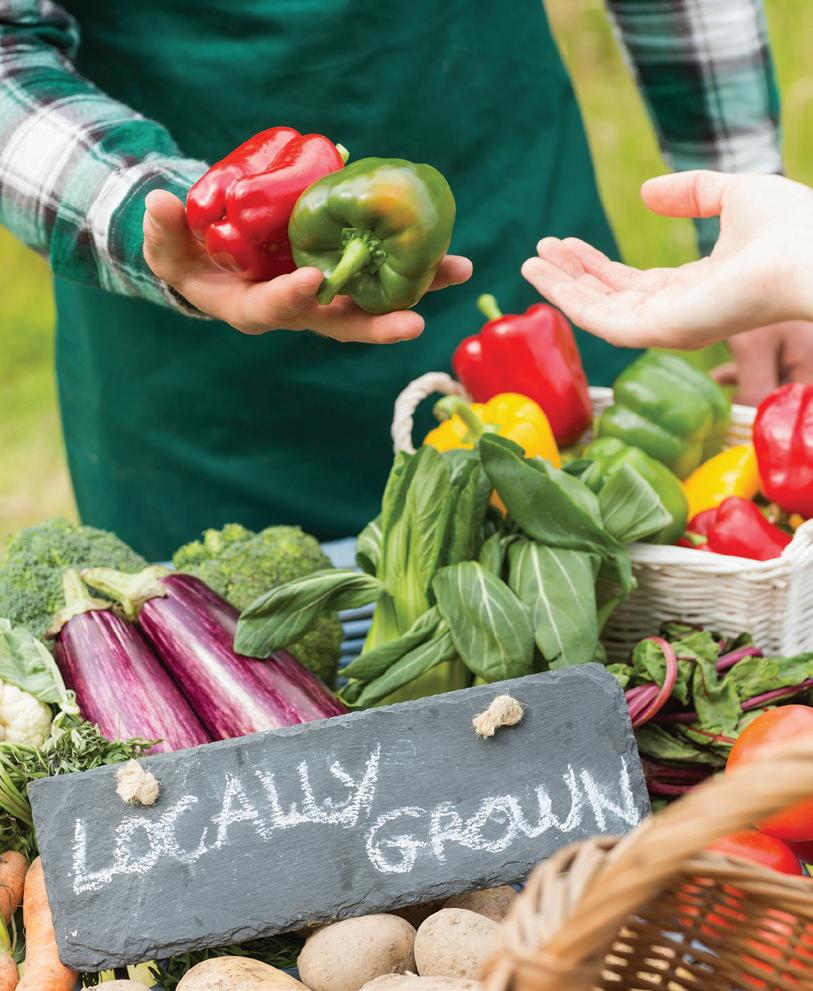
For example, one assessment conducted under the World Climate Research Programme and published in 2020 in the Reviews of Geophysics concluded that the warming range of the planet will be between 2.6°C and 3.9°C.
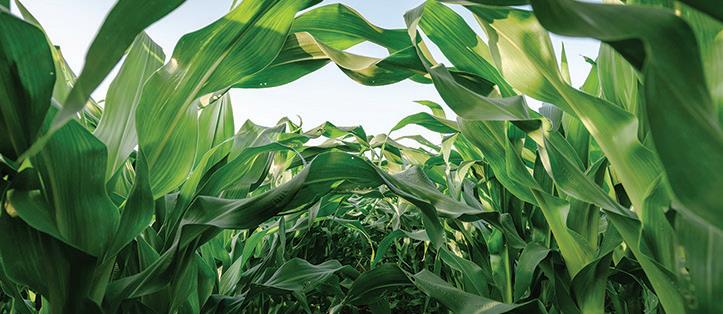
The population is growing and so is its demand for food to fuel those extra bodies.
Harvard Business Review reports the global population has quadrupled over the last century. It’s predicted that, by 2050, the population will exceed nine billion people.
The world is not able to feed all of its inhabitants, according to Penn State. There are more than one billion people who are estimated to lack sufficient food, and two billion who do not receive adequate nutrition. Researchers from the Institute on the Environment at the University of Minnesota concluded that, to feed the world by 2030, yields on maize, rice, wheat, and soybeans will have to rise by 60 to 110 percent. At the start of 2023, projections show them only increasing by 45 to 60 percent. There are a few reasons why food supply may not meet up with demand.
• Climate change: Climate change is predicted to cause issues to crop yields, especially in portions of the world where the population is growing the fastest. For example, a recent NASA study published in the journal Nature predicts that high greenhouse gas emissions may cause corn output to decline as early as 2030, but wheat output would increase. Farmers may need to roll with the punches and shift operations to cope with the environmental changes.
• Decreased commercial farming interest: Fewer people are working in farming. Land prices for expansion, new government mandates and regulations, and the impact of immigration and trade
policies have made farming less attractive than it once was. Fewer commercial operations result in a diminished food commodity output.
• Consumer waste: Food loss and waste (FLW) is a widespread issue, posing a challenge to food security. The World Bank estimates 30 percent of all food across the globe is wasted, amounting to 1.3 billion tons of food per year. The average global household wastes 74 kg of food each year, according to the United Nations Environment Programme’s 2021 Food Waste Index. Food waste is an issue that needs a solution as the world looks for ways to feed an expanding population in the decades to come.
In order to improve output, farmers have to make some changes. These can include investment in tools and technologies that enable farmers to apply nutrients more precisely and at lower cost, advises the Environmental Defense Fund. Seeds that need less water and fewer nutrients, as well as new fertilizers that are less likely to be lost to air and water, are some additional ideas. Farmers also may want to employ green practices, such as hydroponics and drip irrigation, if they haven’t already, to improve efficiency and cut costs. The public also may need to petition their lawmakers to make it easier for farm workers arriving on working visas to man the fields.
Food demand continues to rise, and it has become challenging for agricultural operations to keep up.
he popularity of organic foods is undeniable. According to a 2021 survey from the Organic Trade Association, total sales of organic foods topped more than $60 billion in 2020. Data from Mercaris, which provides market insight and analysis on organics and non-GMO foods, supports that finding and indicates that organic food sales grew by 9 percent between 2009 and 2019. During that same time period, conventional food sales grew
only 3 percent, which illustrates just how popular organics have become over the last decade and a half. And despite being a year marked by a pandemic and the considerable economic uncertainty it unleashed, 2020 proved to be an especially good year for organics. Mercaris reports that organic food sales increased by 13 percent in 2020, which serves as another indicator that consumers are increasingly demanding organics over conventional foods.

















